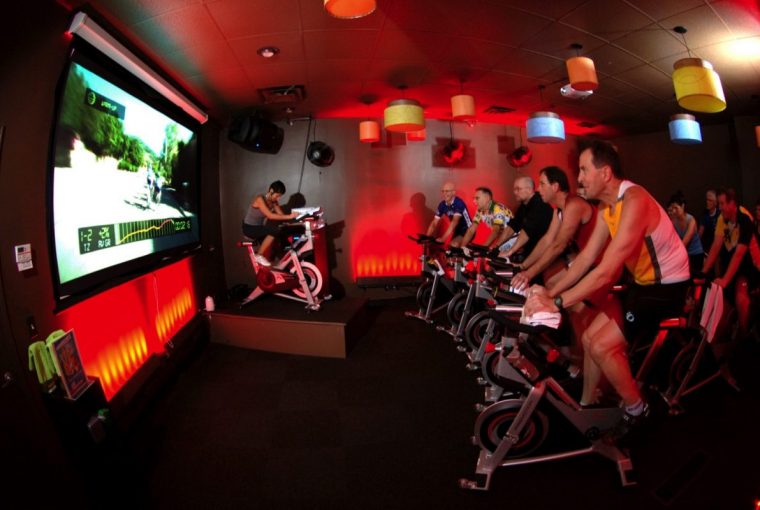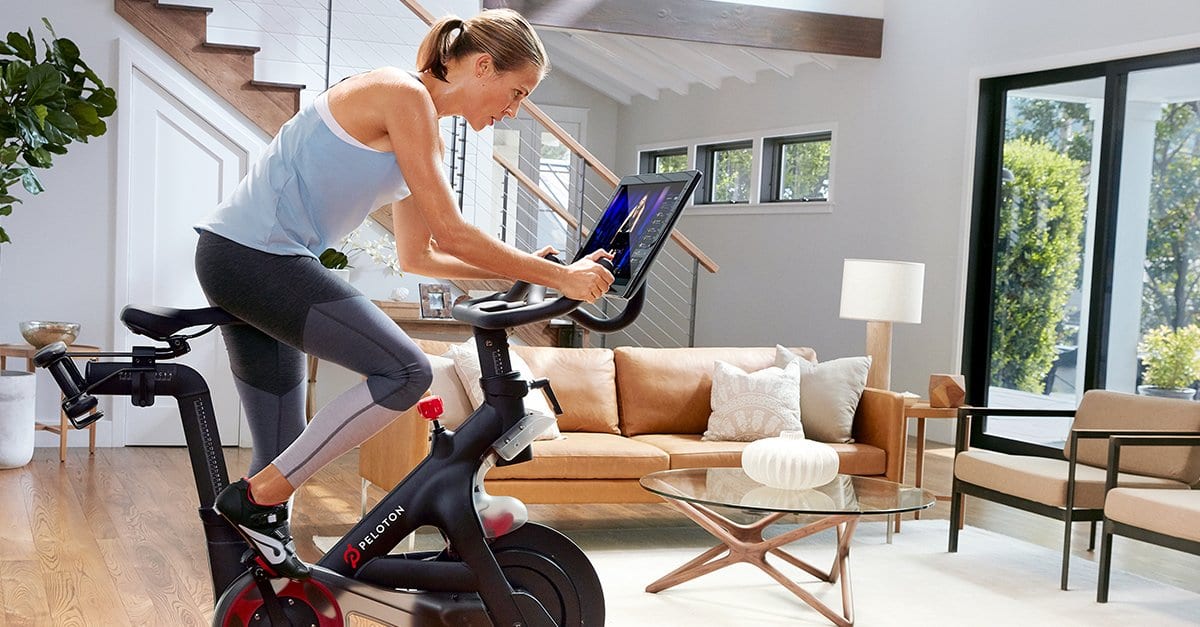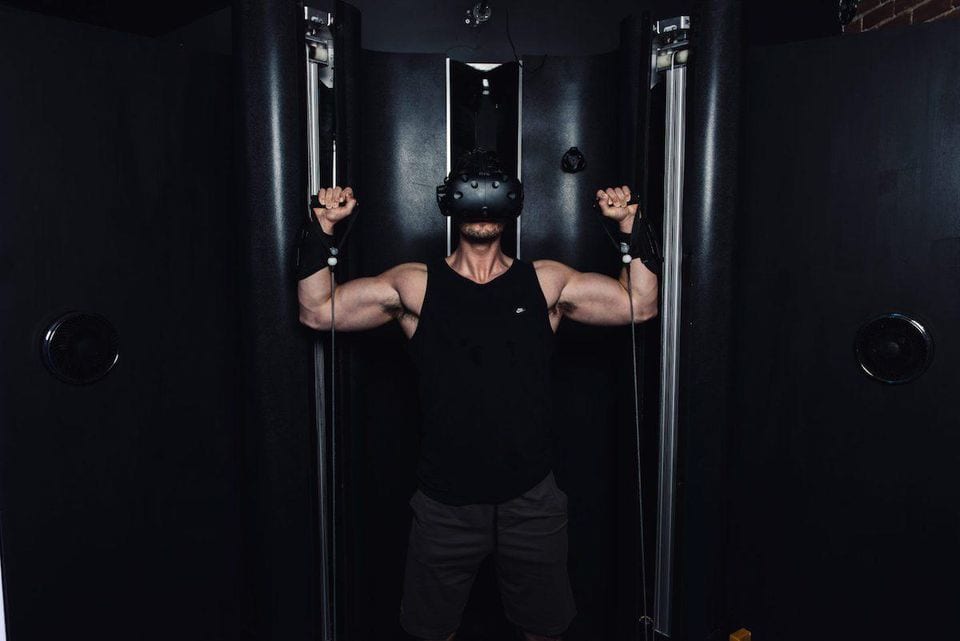Unless you’ve been taking a digital break recently, you’re well aware that virtual exercise classes have passed the threshold from a fun app to try out into big business. And gym-provided, in-home exercise offerings are poised to become the next big thing.
But what’s your take? Will working out from the comfort of your home to a video recording of a group class at a world renowned studio really take the place of in person experiences one gets when they join a live class at their local gym? We’ve surveyed some of the more popular trends to see what’s coming, and the value they have for those looking to step out of the gym and still stay fit and healthy.
In the US recently, Gold’s Gym announced that it was launching Gold’s AMP, a digital personal-training app that features prerecorded video trainer routines and a built-in music-streaming service.
The service, priced at $9.99 a month, will be offered both to Gold’s Gym members and to non-members. Gold’s has over 700 clubs, in 38 states and 26 countries, serving more than 3 million members.
At about the same time, Crunch introduced Crunch Live, its own at-home, $9.99-a-month series of exercise options. “No matter where you are, access Crunch Live on any device, including your laptop, tablet, mobile device, and more!” the company encouraged users.
Like Gold’s AMP, Crunch Live will be marketed both to members and to nonmembers.
It seems safe to say that, within a fairly short period of time, every major club chain and/or franchise will be following suit.
While not quite the same, the convenience of starting a class on your schedule is something that Goodlife Virtual Fitness Classes are now offering across Canada. Classes are held in the respective studio (Group Fitness or Cycling studio) via a projector and screen during off peak hours. The goal of Virtual Fitness is to give members the opportunity to try Group Fitness classes when LIVE classes are not scheduled.
The Benefits of Virtual Exercise
We’re not suggesting that the move to provide health, fitness, nutrition, and other wellness services, in digital format, to users outside the walls of a club is limited to “the big boys”—not at all. Many—if not most—of the industry suppliers who have staked their claim, and made their fame, in the virtual exercise arena are now making it possible for clubs to deliver their own online programs.
Ask these companies or industry observers what’s propelling the online surge, and the answers they offer echo or overlap with one another.
If you look at the fitness industry today, people are looking for the utmost flexibility in their workout routine. There’s a number of new technologies, disruptive services, and fitness apps that have been out there, and companies are finding new ways to fill consumer needs. Among the critical factors active in the equation: Today, consumers want all of the options. They want them to be customized. They want to be able to access them when, where, and how they like.
The new virtual exercise world provides a seamless experience, without the interruption of ads. Members can do exactly the same classes they enjoy at the club. They have access to classes they wouldn’t be able to find online. With the live-streamed classes, there also can be specific interaction with, and shout-outs to, members working out at home.
Club operators can create digital memberships, including high-quality group exercise, which means a far bigger potential market, since geography is no longer an issue. Keep the member engaged with their brand: the member’s activity still takes place in the club’s own space, whether or not they’re in the club. And provide members with the best online fitness content on the market, adding value to the membership.
The member’s activity still takes place in the club’s own space, whether or not they’re in the club.
Equipment manufacturers will be studying and responding strategically to this emerging trend. Many already offer similar services—tutorials, coaching, virtual programs, interactive activities—on their commercial cardio machines, and it’s likely these will proliferate on their consumer units. Conversely, Peloton, a leading manufacturer of personal exercise bikes that access programming via the Internet, has opened a bricks-and-mortar studio in New York City.
The Peloton bike brings you the most convenient and immersive indoor cycling experience, streaming daily live classes from our NYC studio directly into your home. You’ll have 24-hour access to studio cycling classes available to your entire household. The ability to monitor your progress and track your in-class metrics makes the Peloton brand one of the smaller market brands making a big splash in the virtual exercise world.
Virtual content can be accessed by all common digital devices, such as computers, tablets, and smartphones. Most firms offer a large variety of classes, which are updated regularly. Additional club-level technology and staffing requirements are nominal. The systems are cloud-based.
Black Box VR is taking the idea of virtual exercise and gaming to a ridiculous new level using HTC Vive and proprietary exercise hardware that turns working out into an immersive, competitive video game — or it turns video games into a workout, depending on your perspective.
Black Box VR intends to open its first boutique gym this year in San Francisco where patrons will step into a literal black box, no bigger than 8 feet by 8 feet, and strap on an HTC Vive headset and motion-tracking forearm bands. And then the game begins: You’re standing in the middle of a stadium packed with cheering fans, facing oncoming attackers and, eventually, giant mythical creatures. You throw projectiles at the enemies by doing standing chest presses. The crowd cheers, the score ticks up and it’s all a lot of fun. In the demo, the tension ramps up rapidly to demonstrate the system’s ability to dynamically add weight over time as players get stronger.
Eventually, Black Box VR wants to add the ability for players to compete live against other people working out across the world, but for now the company plans to incorporate user profiles and local leaderboards into the gym.
So with society already having shifted from living in the present to living virtually through our devices, it makes sense that our fitness routines would soon follow suit. But in the end, there’s still something to be said of taking a class in a live setting and actually talking to people in the room. The sense of community is something that virtual exercise will never be able to completely replace. But if it helps people stay fit and active, then only time will tell if virtual exercise becomes the Tae Bo of this generation.






